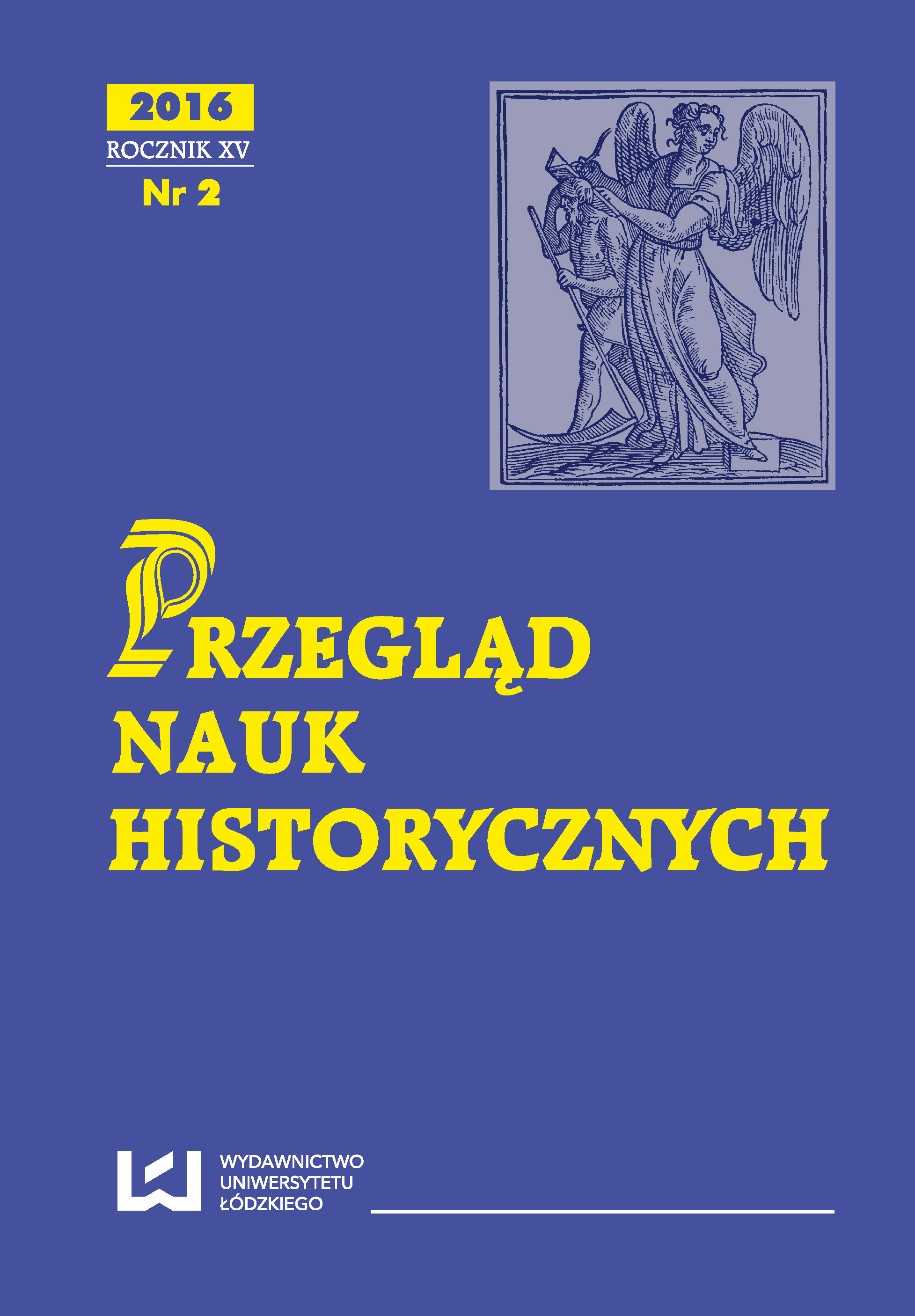Ludność zależna w sandomierskich dobrach książąt Zasławskich w 1629 roku
The dependent population in landed estates of princes Zasławski in Sandomierz voivodeship in 1629
Author(s): Zbigniew AnusikSubject(s): Economic policy, Demography and human biology, Rural and urban sociology, 17th Century, Fiscal Politics / Budgeting
Published by: Wydawnictwo Uniwersytetu Łódzkiego
Summary/Abstract: The main aim of the article was to find out whether tax registers from 1629 may be used in statistical and demographic research. The article was also to answer the question what is a number and structure of the dependent population that is recorded in mentioned tax registers in various estates. Studies took a form of a survey and included only a small part of the tax registers of Pilzno and Sandomierz counties. A detailed analysis was carried out for records on landed estates belonging to the family of princes Zasławski. The choice was made on purpose as Zasławski family had the largest properties in both above mentioned counties. Members of this family were also the biggest landowners in Sandomierz voivodeship as well as in the entire Crown. In 1629 the owner of landed estates of princes Zasławski in Sandomierz voivodeship, juvenile entailer of Ostróg – Władysław Dominik prince Zasławski, owned the largest hereditary landed estate in county of Pilzno. His estates included: half of Tarnów city, half of its four suburbs, 34 villages and 4 parts of villages. In those estates there were farmed 290,424 lans of land and total taxes amounted to 1893 florins and 12 dinars. Such a sum accounted for 12,08% of total taxes from Pilzno county and 16,99% of taxes obtained from estates owned by the local nobility. In the neighboring Sandomierz county landed estates of princes Zasławski owned by young entailer of Ostróg included: 4 towns, 44 villages and 3 parts of villages. There were farmed 198,385 lans of land there and total taxes amounted to a significant amount of 2188 florins and 24 groszy. It accounted for 9,95% of total taxes from Sandomierz county and 20,94% of the tax paid by the local nobility. Therefore, according to the data from both analyzed records, in 1629 landed estates of princes Zasławski in Sandomierz voivodeship included: 4½ of the city, half of 4 suburbs, 78 villages and 7 parts of villages. In those estates there were farmed 488,793 lans of land from which taxes amounted to 4081 florins 24 groszy and 12 dinars. However, it should be noticed that properties in Sandomierz voivodeship were only a part of all landed estates owned by princes Zasławski. At that time their enormous latifundium consisted of 50 cities and about 750 villages. In the entire Commonwealth no other magnate family of that time owned so extensive properties. After calculations it was found out that in landed estates of Władysław Dominik prince Zasławski located in Pilzno county in 1629 lived 8895 people. Rural population (8040 people) accounted for 90,39% of the studied population while in cities lived 855 people, that is approximately 9,61% of all residents of estates. In his estates lying in Sandomierz county lived 8042 people. Rural population (4174 people) accounted for 51,9% of the studied population while in cities lived about 3868 people, thus 48,1% of all residents of these properties. In 1629 in villages owned by Władysław Dominik prince Zasławski there were living 5214 peasants whit their families, 1723 smallholders, 4125 landless peasants and 1152 people engaged in production, trade or services. This population accounted for a total of 12 214 people. Of all inhabitants of villages peasants constituted 42,69%, smallholders 14,11% and landless peasants 33,77%. It is worth underlying that a significant proportion (9,43%) of rural population were persons engaged in production, trade or services. The analyzed tax registers gave also interesting information concerning cities owned by entailer of Ostróg. It can be concluded that in 1629 in those cities lived 1539 people obliged to pay taxes. In this group landless peasants accounted for 7,99%, craftsmen – 78,17% and people engaged in trade – 8,38% of the population. What is more, families of people providing various services amounted to 4,87% of urban population. Rogues (hultaje) and people from the margins of society amounted to 0,59% of the tax payers. In cities belonging to princes Zasławski lived also 3184 people for whom there are no records to establish the area of their livelihood. Therefore, urban population in Sandomierz county’s landed estates of entailer of Ostróg amounted to 4723 people. Residents paying taxes who were stated in the registers accounted for little more than 32,58% of the population. Thus in 1629 total estimated population living in princes Zasławski landed estates in the Sandomierz voivodeship amounted to 16 937 people (12 214 inhabitants of villages and 4723 residents of cities). Therefore, rural and urban population accounted for 72,11%, and 27,89% of the studied population, respectively. It is believed that this estimation reflects the reality (although estimates may be too low). Thanks to the results obtained in the study one may conclude that conscript records are important and in many cases even irreplaceable source of information that may be used in various statistical studies.
Journal: Przegląd Nauk Historycznych
- Issue Year: 12/2013
- Issue No: 2
- Page Range: 5-39
- Page Count: 35
- Language: Polish

